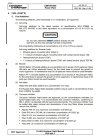CaptainDoug
Pre-Flight
- Joined
- Aug 18, 2022
- Messages
- 49
- Display Name
Display name:
Doug
It's definitely worth asking whether having a gear up landing would have been more survivable.Heavy traffic. Collision with vehicles was unavoidable. By putting it on the ground, they minimized the energy of the crash, which made it survivable for the pax.
Worth asking whether a gear up landing might have been more survivable.
But the pilots may not have had that choice - I would venture to guess that the gear is hydraulic
in the Challenger. And with both engine driven hydraulic pumps inoperative, the gear won't retract.
Judging from the ADS-B info, it's very likely that the pilots already had their gear down as they were
turning base at 163 knots - and that's just before the speed and altitude started to
drop precipitously and the pilot declared the dual engine failure.
Rest in piece:
Last edited:




